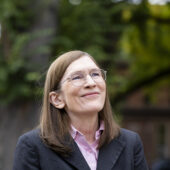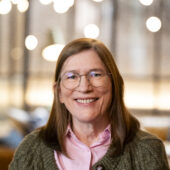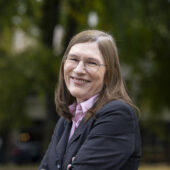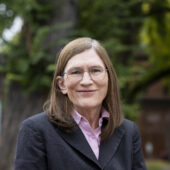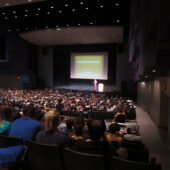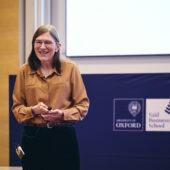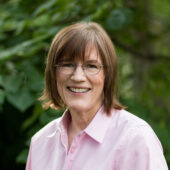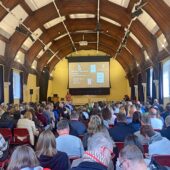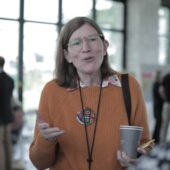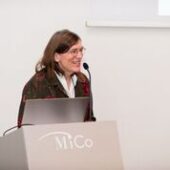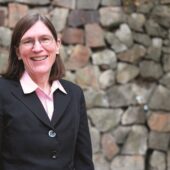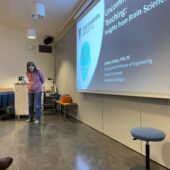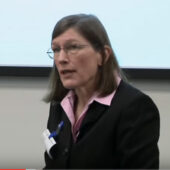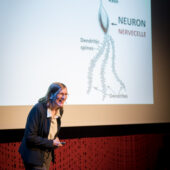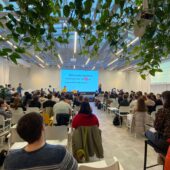About Me
A little bit more about my background. My husband and I were married on February 1, 1984, two months after we met at the South Pole Station in Antarctica. We have two daughters as well as two adopted sons who are originally from Kosovo. I started studying engineering much later than many engineering students, because my original intention had been to become a linguist. I enlisted in the U.S. Army right after high school and spent a year studying Russian at the Defense Language Institute in Monterey, California. The Army eventually sent me to the University of Washington, where I received my first degree–a B.A. in Slavic Languages and Literature. Eventually, I served four years in Germany as a Signal Officer, and rose to become a Captain. After my commitment ended, I decided to leave the Army and study engineering so that I could better understand the communications equipment I had been working with.
Five years later I received a second degree: a B.S. in Electrical Engineering. In the meantime, I worked several fishing seasons as a Russian translator on Soviet trawlers up in the Bering Sea. I wrote a book about that experience–Hair of the Dog: Tales from a Russian Trawler. As one of my captains used to enjoy reminding me: “You know too much, it’s time to kill you.” (It rhymes in Russian.)
I also spent a season as the radio operator at the South Pole Station in Antarctica, where Philip and I met. (We were married as soon as we got ‘off the ice,’ in New Zealand.) With the electrical engineering degree in hand I settled down and spent three years working as a instrumentation and controls engineer at a laser research and development firm near Seattle. We moved to the Detroit area in 1989. I worked for Ford briefly, and then began doing consulting and attending Oakland University part time while our children were small. I received a M.S. degree in Electrical and Computer Engineering in 1995, and a Ph.D. in Systems Engineering in 1998. I was hired after my graduation to continue on as a professor at Oakland University.
My work focuses on the complex relationship between neuroscience and social behavior. I’ve published in outlets as varied as the Proceedings of the National Academy of Sciences, the Wall Street Journal, and The New York Times. My research has been described as “revolutionary” in the Wall Street Journal.
Barbara Oakley, PhD, PE, is a Distinguished Professor of Engineering at Oakland University. She conducts research on learning, cognition, and educational practices, bringing insights from neuroscience and psychology into the classroom. A New York Times bestselling author, she has written and co-authored numerous books, including A Mind for Numbers, Learning How to Learn, Mindshift, and Uncommon Sense Teaching. Her work has been featured in outlets as varied as The Wall Street Journal, The New York Times, and the Proceedings of the National Academy of Science. As the instructor of Learning How to Learn, one of the world’s most popular online courses, she has helped millions develop effective strategies for mastering new skills. With a background that includes military service, adventures on Soviet fishing trawlers, and work at the South Pole Station in Antarctica, Dr. Oakley brings a unique perspective to understanding how people learn—and how anyone can unlock their potential.
Short Bio
Barbara Oakley is a Distinguished Professor of Engineering at Oakland University in Rochester, Michigan. Her work focuses on the complex relationship between neuroscience and social behavior. She created and teaches, with Terrence Sejnowski, Coursera’s “Learning How to Learn,” one of the world’s most popular massive open online course with some four million registered students, along with other popular “Top Online Courses of All Time.” Barb is a New York Times best-selling author who has published in outlets as varied as the Proceedings of the National Academy of Sciences, the Wall Street Journal, and The New York Times—her book A Mind for Numbers has sold over a million copies worldwide. She is the winner of the McGraw Prize—the colloquial “Nobel Prize for Education” and is a Fellow of both the Institute of Electrical and Electronics Engineers and the American Institute for Medical and Biological Engineering.
Long Bio (Originally from ASEE)
Barbara Oakley, a Distinguished Professor of Engineering at Oakland University, is a best-selling author and teacher of the world’s most popular massive open online course (MOOC), “Learning How to Learn.” Oakley started studying engineering much later than many engineering students, because her original intention had been to become a linguist. Enlisting in the U.S. Army right after high school, she spent a year studying Russian at the Defense Language Institute in Monterey, California. The Army eventually sent Oakley to the University of Washington, where she received her first degree–a B.A. in Slavic languages and literature. Eventually, she served four years in Germany as a signal officer and rose to become a captain. After her commitment ended, she decided to leave the Army and study engineering to better understand the communications equipment she had been working with.
Five years later, Oakley received a second degree: a B.S. in electrical engineering. In the meantime, she worked several fishing seasons as a Russian translator on Soviet trawlers up in the Bering Sea and wrote a book about that experience: Hair of the Dog: Tales from a Russian Trawler. As one of her captains used to enjoy reminding her: “You know too much, it’s time to kill you.” (It rhymes in Russian.)
Oakley also spent a season as the radio operator at the South Pole Station in Antarctica, where she met her husband of 33 years, Philip Oakley. (They were married as soon as they got ‘off the ice,’ in New Zealand, and have two daughters as well as two adopted sons who are originally from Kosovo.) With the electrical engineering degree in hand, Oakley settled down and spent three years working as a instrumentation and controls engineer at a laser research and development firm near Seattle. The couple moved to the Detroit area in 1989, and Oakley worked for Ford briefly and then began doing consulting and attending Oakland University part time while her children were small. She received an M.S. degree in electrical and computer engineering in 1995, and a Ph.D. in systems engineering in 1998, joining the faculty upon graduation.
Oakley’s work focuses on the complex relationship between neuroscience and social behavior. She has published in outlets as varied as the Proceedings of the National Academy of Sciences, the New York Times, and the Wall Street Journal, which described her work as “revolutionary.” Oakley, a fellow of both the American Institute of Medical and Biological Engineers and IEEE, is the recipient of numerous honors, including the McGraw Prize (2023), Michigan Distinguished Professor of the Year (2018), ASEE’s Chester F. Carlson Award for outstanding technical innovation in engineering education (2015), and National Science Foundation New Century Scholar (1999).

Philip Oakley after 10 minutes in -70 ºF, 60 mph winds at Siple Station, Antarctica. He doesn’t even look cold.

Philip and I at the Salt Works at Lake Grassmere, Marlborough, New Zealand, a few days after our marriage on February 1, 1984

Night fishing on the Bering seas. The Russian deck crew workers in the foreground are preparing for the net (codend) of yellow-fin sole to be taken aboard from an American catcher boat. It is around 2:00 am and the political commissar is sleeping, so the music of “Queen” is playing loudly over the speakers.

Herd Your Horses is a game I created with some friends. It’s a perennial best-seller and was selected as a top-100 game by Games Magazine

The daughters Oakley on the Ligurian Coast of Italy, near Genova, during the IEEE EMBS 2002 Special Topic Conference on Nanobioscience.


